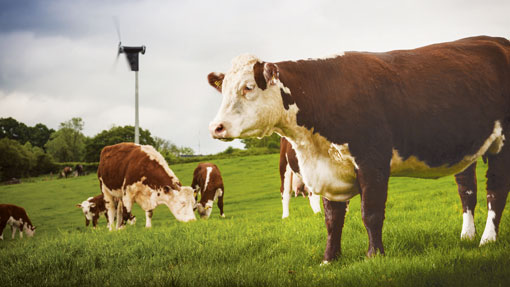Tax and accounting tips for farm renewables

There are many aspects to consider when installing a renewable energy project, and one that can be easily overlooked is how to financially account for it.
Projects should have their own income and expenditure categories so that their performance can be assessed separately to that of the farm enterprises, says Mark Chatterton of accountant Duncan & Toplis.
Capital expenditure
Expenditure on renewable projects should have its own fixed asset category in the accounts, entitled “renewable energy equipment”.
Income
Income received from owned green energy projects should be recognised as a separate line in the profit and loss account every year so that return on capital can be easily calculated.
Care should also be taken to record income correctly in the accounts – there is output VAT on electricity exported to the grid which must be paid over to HMRC as part of your VAT return.
This can be overlooked, as the energy providers which buy green power from farm generators, self-bill farmers for this power, including VAT, says Mr Chatterton. However there is no VAT on the Feed-in-Tarriff income.
Income from leased sites should be treated as rental income, not trading income. If there is a large rental income, it is worth arranging the timing of payments to suit the farm’s cash flow and tax considerations.
Depreciation
A depreciation rate of 5% on cost is generally used to write the investment off over 20 years – this is prudent even if income streams are guaranteed for 25 years, says Mr Chatterton.
Annual Investment Allowance
Those considering renewable energy installations should not forget that when these are for business purposes, they qualify for tax relief under the Annual Investment Allowance (AIA), says Miss Kirkham.
From 1 January 2013 to 31 December 2014, the AIA gives immediate tax relief on expenditure of up to £250,000 on plant and machinery purchased in an accounting year.
“If you are considering investing in renewable energy in the next year, take advice early on to ensure your AIA is maximised,” says Sam Kirkham, associate at accountant Albert Goodman.
“This is particularly important if you have made other purchases in the year or if your accounting year straddles the dates mentioned above.
“Making sure you maximise the tax relief can shorten the payback period on these investments significantly.”
Options for doing this include bringing forward expenditure or changing accounting dates. Long term projects need careful thought to maximise use of the AIA in the right circumstances, says Ms Kirkham, as the current £250,000 AIA limit only runs until the end of 2014.
Ownership and structure
How renewable energy projects should be owned and structured is a huge question, with legal, inheritance and tax considerations. How to value these projects is also a big issue.
In the right circumstances, says Mr Chatterton, consider whether a new generation should take ownership of a green energy project – this may give the opportunity to introduce a new structure and would also avoid valuation issues when members of an older generation hand on or bequeath such assets.
An increasing number of higher rate taxpayers are considering putting renewable energy businesses into a company to take advantage of the 20% corporation tax rate rather than the 40 or 45% rates which they would pay as individuals.
However this needs careful assessment because it also has implications for capital gains and inheritance taxes.
